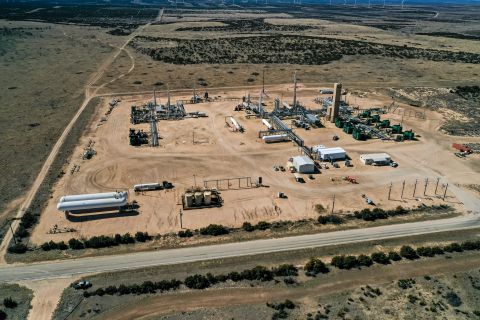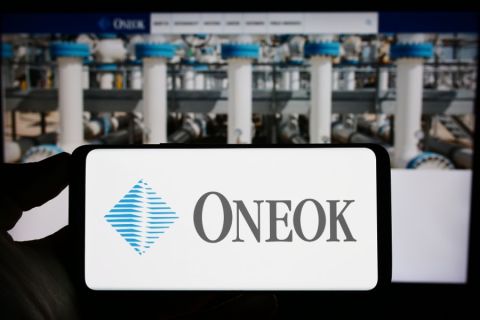What do a major international energy company, a small independent from Dallas, an ex-federal-judge-turned-oilman in Tulsa, and a $10-billion investment fund out of London have in common? In the past year they, like thousands of other companies and individuals, have participated in acquiring or selling oil and gas properties through an auction process. By the mid-1990s the energy industry recognized that the auction had become a widely used tool for buying and selling properties in the U.S. domestic market. Many companies adapted in the mid-1980s to low oil and gas prices through a strategy of asset rationalization. This systematic sale of less profitable and/or noncore properties created the need for a more efficient way to sell properties. The stage was set for the emergence of the auction. The process matured professionally and technically, and is now regarded as a transaction exchange rather than a marketing technique. The most notable improvements in the last decade include: the expansion of technical services to increase the quality of land, commercial and technical data available for buyer evaluation; an increase in Internet use for hybrid live/Internet auctions and dissemination of data; the enhancement of data-room utility; and development of a sophisticated market portfolio analysis. Despite wide acceptance-total gross auction sales are currently estimated to range from $400- to $500 million a year-the auction is under-utilized for oil and gas asset sales, based on an analysis of The Oil & Gas Asset Clearinghouse data for 1996-2004. While there are other upstream-asset auction firms, the Clearinghouse data offers the most continuous and largest sampling. The total lot count in the study database was 1,134 or an annualized average of 267 per year. Only minimum-bid properties were used in this study, because they were completely evaluated and their metrics were available for comparison. The metrics are calculated from the gross sales amount compared with production rate ($ per barrel of oil equivalent per day), cash flow multiple (in number of months) and producing reserves ($ per BOE). BOE for gas was calculated on a 6-to-1 basis. The five-year annualized metrics for all lots were $21,206 per BOE of production per day, a 46-month cash flow multiple and a value of $7.60 per BOE of proved developed producing (PDP) reserves. These metrics match favorably with negotiated property sales over the same period and were analyzed separately. (For more on this, see "Successful Divesting," Oil and Gas Investor, November 2004.) However, these statistics also have many variables (e.g., rate, reserves-to-production ratio, lifting costs) that impact categorical results from lot to lot and year to year. Property choices Comparisons were made by types of auctioned properties. An additional analysis was made of the year in which the assets were sold. In most cases, the market clearly values specific types of assets more highly than others. RI or WI. Royalty-interest property metrics tended to receive values more than two times that of working interest properties. Royalty interests are not usually burdened by operational and capital expenses. The market perceives royalty interests as being without future expense liability and is willing to pay a premium for ownership. The average price paid per BOE is double. Small producers, royalty aggregators, institutions, trusts, foundations and retired oil executives are among those who commonly participate in bidding for royalty interests. Big or small; operated or nonoperated. Metric differences were insignificant between major (the top 50 publicly held E&P companies) and small companies and between operated and nonoperated properties. Many companies and individuals are not interested in taking on the burden of operations, but are still interested in direct investment in oil and gas properties that can bring returns much greater than can be realized in conventional investment markets and/or energy stocks. Oil or gas. Gas metrics were greater than 20% compared with oil metrics. Gas generally has lower lifting costs and environmental liability. Buyers also gained confidence in the last few years in the long-term stability of gas prices. By basin. Only basins that averaged more than 10 lot sales per year were compared. These included East Texas, the Gulf Coast, the Midcontinent, the Permian, the Rockies and South Texas. The Permian Basin was assigned a relative index of 1.0 and then compared with the other five basins. East Texas metrics were notably higher than the other basins. The market perceives East Texas as having a stronger infrastructure, more gas and more upside. The upside generally comes in downspacing of offsetting production to recover low-risk additional reserves. The Rockies and Gulf Coast metrics were the lowest. Rockies production is characterized as long-life/low-rates. The commodity often receives less price value because of differential deductions and infrastructure limits. The Gulf Coast is typically characterized by water-drive reservoirs, high decline rates and higher operating costs. Without strong subsurface control and volumetric support, producing reserves are often discounted. By year. Commodity prices have trended upward steeply since the middle of 2002. This trend is seen when comparing all category metrics relative to the year 2000. Rate and reserve metrics are very sensitive to price movement and have increased substantially. Cash flow metrics have increased moderately due to growing market competition as buying opportunities have not kept pace with demand. Auction or negotiation The auction process is a trusted and efficient mechanism in providing liquidity; however, it is under-used based on an evaluation of historical U.S. upstream merger and acquisition activity. Excluding corporate (stock) transactions, asset sales have averaged about $10 billion per year since 2000. Asset sales via auction are estimated to comprise only $400- to $500 million or 5% of the total sales. The balance of asset sales is done through negotiated sales. Sellers cite three common reasons for using the negotiated-sale process: an auction requires more work; negotiated sales receive better value; and the seller has more control. All three of these reasons depend on the attributes of the properties, however. Auction and negotiated sales usually require equivalent work. The difference is in timing. The seller prepares conveyance documents in both processes. In the auction, most of that work is done early in the process by the seller as title is conveyed on the day of sale. Conversely, in negotiated sales the purchase-sales agreement and due diligence provisions allow a more liberal time frame. In negotiated sales more of the due diligence burden is on the buyer; however, the seller and buyer can spend a large amount of time negotiating provisions of the purchase-sales agreement during the negotiation phase. Historical metrics from sales of producing properties with marginal undeveloped reserves indicate that an auction can receive as good, if not better, value than negotiated sales. This is particularly true for negotiated-sale packages where the properties are spread over several basins, with individual property values of less than $10 million. In negotiated sales, the lack of property concentration for a "winner-take-all" process often limits the competition population. This is because usually only larger-net-worth companies can buy the entire package. Many larger companies choose not to participate because of the small value of the individual properties that make up the package and the lack of geographical concentration. In a review of case histories of actual negotiated sales versus auction sales, the individual properties that are partitioned into auction lots received greater value than the attempted total sale of properties in one package. Control is occasionally a need of the seller and can supercede maximizing value. For example, choosing negotiated sales over an auction process for smaller and geographically scattered properties might occur because the seller desires to control the potential buyer, environmental liability and/or other reasons, through a purchase-sales agreement. M David Nordt is vice president of transactions for The Oil & Gas Asset Clearinghouse, a business of Tristone Capital Inc., and the architect of the Clearinghouse's mid-value negotiated sales process. Additional support in developing this article was provided by Ken Olive, Clearinghouse president and chief executive.
Recommended Reading
Five Point Closes Infrastructure Fund with $1.4B in Commitments
2024-09-09 - Five Point Energy, which created newly public Permian Basin company LandBridge, said its Five Point Energy Fund IV was oversubscribed from a target of $1.25 billion.
Midstream M&A Adjusts After E&Ps’ Rampant Permian Consolidation
2024-10-18 - Scott Brown, CEO of the Midland Basin’s Canes Midstream, said he believes the Permian Basin still has plenty of runway for growth and development.
ONEOK Offers $7B in Notes to Fund EnLink, Medallion Midstream Deals
2024-09-11 - ONEOK intends to use the proceeds to fund its previously announced acquisition of Global Infrastructure Partners’ interest in midstream companies EnLink and Medallion.
Post Oak-backed Quantent Closes Haynesville Deal in North Louisiana
2024-09-09 - Quantent Energy Partners’ initial Haynesville Shale acquisition comes as Post Oak Energy Capital closes an equity commitment for the E&P.
Analyst: Is Jerry Jones Making a Run to Take Comstock Private?
2024-09-20 - After buying more than 13.4 million Comstock shares in August, analysts wonder if Dallas Cowboys owner Jerry Jones might split the tackles and run downhill toward a go-private buyout of the Haynesville Shale gas producer.
Comments
Add new comment
This conversation is moderated according to Hart Energy community rules. Please read the rules before joining the discussion. If you’re experiencing any technical problems, please contact our customer care team.





